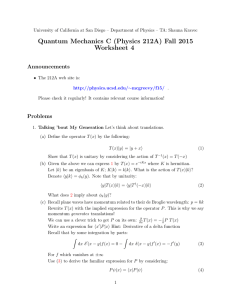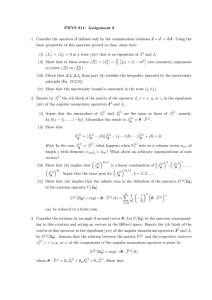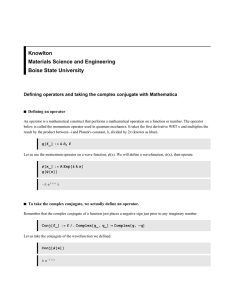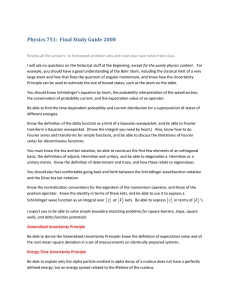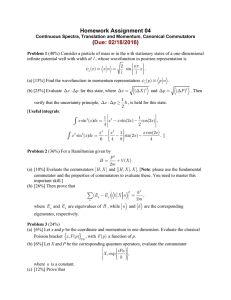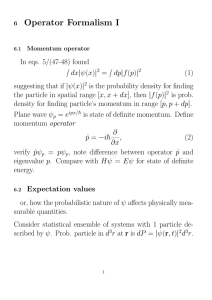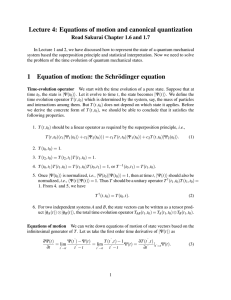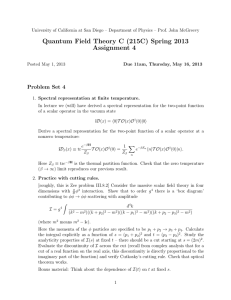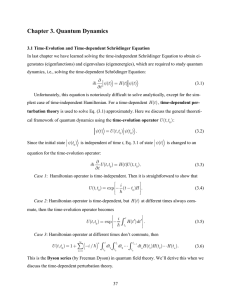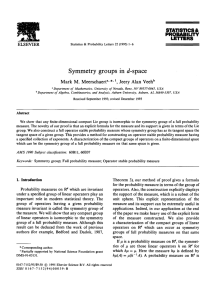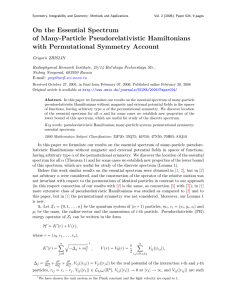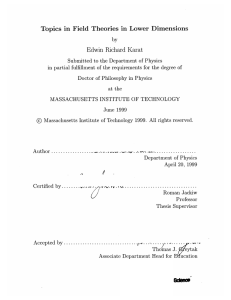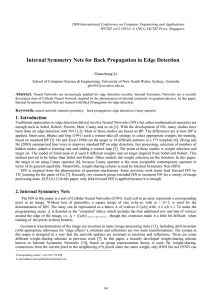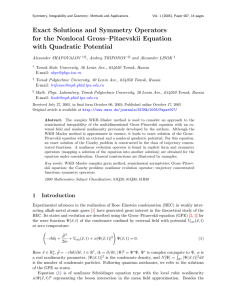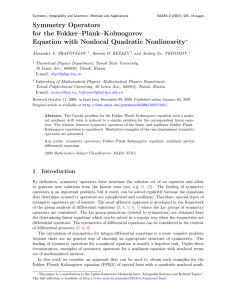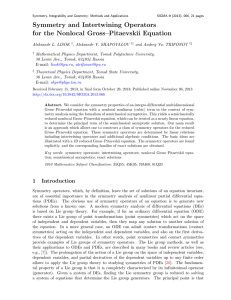PHY 6645 Fall 2001 – Mid-Term Exam 2 Instructions:
advertisement
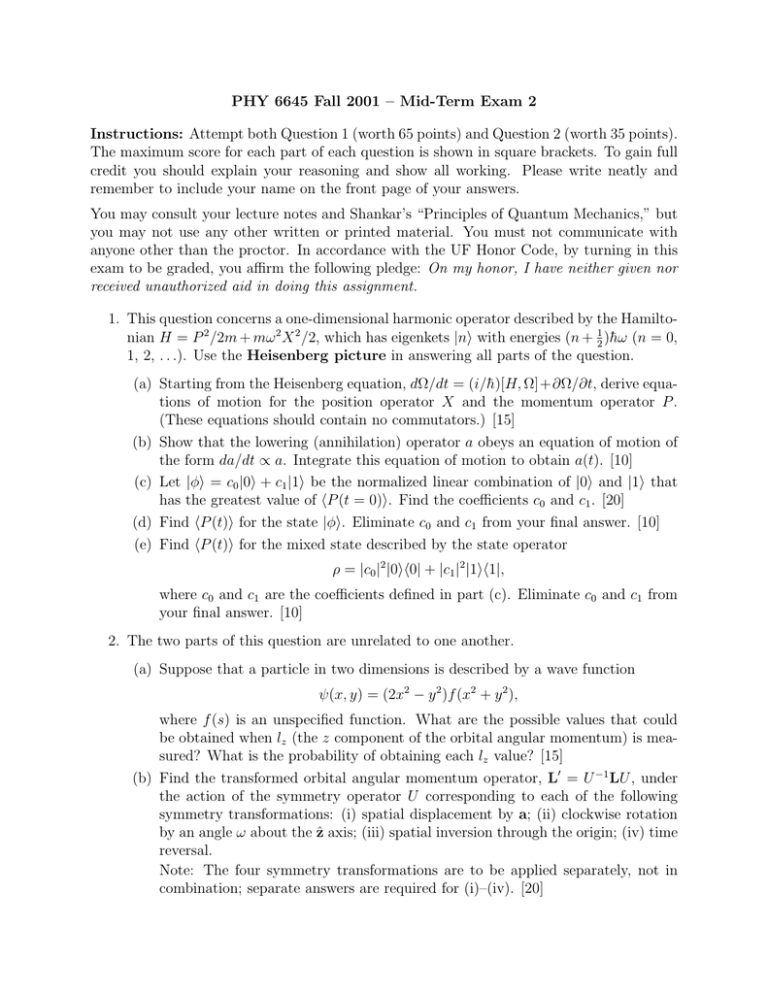
PHY 6645 Fall 2001 – Mid-Term Exam 2 Instructions: Attempt both Question 1 (worth 65 points) and Question 2 (worth 35 points). The maximum score for each part of each question is shown in square brackets. To gain full credit you should explain your reasoning and show all working. Please write neatly and remember to include your name on the front page of your answers. You may consult your lecture notes and Shankar’s “Principles of Quantum Mechanics,” but you may not use any other written or printed material. You must not communicate with anyone other than the proctor. In accordance with the UF Honor Code, by turning in this exam to be graded, you affirm the following pledge: On my honor, I have neither given nor received unauthorized aid in doing this assignment. 1. This question concerns a one-dimensional harmonic operator described by the Hamiltonian H = P 2 /2m + mω 2 X 2 /2, which has eigenkets |ni with energies (n + 12 )h̄ω (n = 0, 1, 2, . . .). Use the Heisenberg picture in answering all parts of the question. (a) Starting from the Heisenberg equation, dΩ/dt = (i/h̄)[H, Ω]+∂Ω/∂t, derive equations of motion for the position operator X and the momentum operator P . (These equations should contain no commutators.) [15] (b) Show that the lowering (annihilation) operator a obeys an equation of motion of the form da/dt ∝ a. Integrate this equation of motion to obtain a(t). [10] (c) Let |φi = c0 |0i + c1 |1i be the normalized linear combination of |0i and |1i that has the greatest value of hP (t = 0)i. Find the coefficients c0 and c1 . [20] (d) Find hP (t)i for the state |φi. Eliminate c0 and c1 from your final answer. [10] (e) Find hP (t)i for the mixed state described by the state operator ρ = |c0 |2 |0ih0| + |c1 |2 |1ih1|, where c0 and c1 are the coefficients defined in part (c). Eliminate c0 and c1 from your final answer. [10] 2. The two parts of this question are unrelated to one another. (a) Suppose that a particle in two dimensions is described by a wave function ψ(x, y) = (2x2 − y 2 )f (x2 + y 2 ), where f (s) is an unspecified function. What are the possible values that could be obtained when lz (the z component of the orbital angular momentum) is measured? What is the probability of obtaining each lz value? [15] (b) Find the transformed orbital angular momentum operator, L0 = U −1 LU , under the action of the symmetry operator U corresponding to each of the following symmetry transformations: (i) spatial displacement by a; (ii) clockwise rotation by an angle ω about the ẑ axis; (iii) spatial inversion through the origin; (iv) time reversal. Note: The four symmetry transformations are to be applied separately, not in combination; separate answers are required for (i)–(iv). [20]






